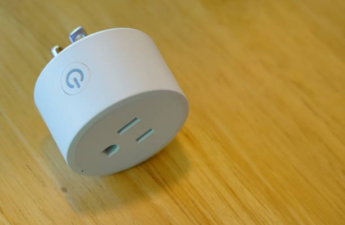When delving into the intricacies of electrical circuits, one might come across the question, “what is called inductance?” Simply put, inductance is the property of a conductor whereby a change in current through it produces an electromotive force (EMF) in the conductor itself and in any nearby conductors. This electromotive force is a byproduct of the magnetic fields that develop around the flowing electric charges. Grasping the concept of inductance is essential for designing efficient and functional electronic systems, as it impacts devices ranging from small-scale sensors to large-scale power transformers.
Introduction to Inductance
Inductance is in electrical engineering what momentum is in physics—it is a property that defines the tendency of electrical conductors to resist changes to the electric current flowing through them. At the heart of this principle lies the inductor, a coil of wire that functions much like an energy storage device, temporarily holding energy in the form of a magnetic field. An inductor’s ability to store energy in this way is what characterizes inductance and sets it apart from other electrical properties like resistance, which arises due to the interaction between free electrons and atoms.

The Role of Inductors
The practical components that embody inductance are inductors. These elements come in various forms, from straightforward wire coils to sophisticated integrations within complex circuits. Inductors serve to:
- Mitigate high-frequency interference in signals, ensuring smooth operation of electronic devices.
- Act as an energy storage medium in power circuits, particularly within LC circuits responsible for controlling voltage fluctuations.
Their ability to affect the phase relationship between voltage and current is especially critical in AC circuits where the power factor is a key performance metric.
Physics Behind Inductance
Understanding the physics behind inductance provides greater insight into how electrical components function in a circuit.
Faraday’s Law of Electromagnetic Induction
A pivotal concept in physics, Faraday’s Law, is what reveals the expression of inductance mathematically: EMF = -N * (ΔΦ/Δt), where ‘N’ denotes the number of turns in the coil and ‘Φ’ stands for the magnetic flux. This equation articulates how the induced electromotive force is proportional to the rate of change in magnetic flux, which is the foundational principle for the operation of inductors.
Lenz’s Law and its Implications
Complementing Faraday’s Law, Lenz’s Law provides an understanding of the dynamics of inductance, positioning that the direction of the induced EMF, and consequently the current, within a closed circuit, will resist the change in magnetic flux that generated it. This law embodies the core essence of what characterizes inductance—its inherent nature to oppose change, thereby permitting the storage of energy as a magnetic field.
Inductors in Practice
Inductors are as ubiquitous as resistors in electrical engineering, and they come in several varieties to fulfill various functional requirements.
Types of Inductors and Their Uses
| Inductor Type | Core Material | Common Use |
|---|---|---|
| Air-core | None (air) | Radio tuning |
| Iron-core | Iron | Power transformers |
| Ferrite-core | Ferrite | High-frequency applications like SMPS |
| Toroidal | Ferrite or Iron | Audio electronics |
Real-World Applications of Inductance
The utilization of inductance across various domains attests to its critical role in the functionality of electronic systems. Among these applications, we find:
- Induction motors which transform electrical energy into mechanical energy using inductance.
- Transformers that employ mutual inductance to transfer energy across coils efficiently.
- Tuned circuits found in radios and TVs, tuning into frequencies through the application of inductance.

Measuring and Calculating Inductance
Units of Inductance
The unit denoting inductance is the henry (H), in honor of the American scientist Joseph Henry. A single henry indicates the inductance required to induce one volt of EMF with a current change rate of one ampere per second.
Factors Affecting the Inductance of a Coil
The inductance of a coil can be influenced by a variety of factors:
- The number of turns in the coil generally correlates with a higher inductance.
- The core material, as different materials have different magnetic permeabilities that impact inductance.
- The coil’s shape, which can focus the magnetic field.
- The overall size of the coil, with larger coils typically having a greater inductance.
The accurate calculation of inductance takes these variables into account, often through complex formulas that consider the specific geometry and material characteristics of the coil.
The Impact of Inductance on Circuit Performance
Inductance doesn’t only store energy; it also significantly influences how circuits behave, particularly in the case of AC circuits where the alternating nature of the electricity introduces a range of new considerations.
Inductance in AC Circuits
In an AC circuit, the inductance can cause the current to lag behind the voltage due to the energy being stored in the magnetic field and then released. This effect is dictated by the frequency of the AC signal—the higher the frequency, the greater the inductance’s influence on the current’s phase. A crucial measurement associated with this phenomenon is the inductive reactance, which is the resistance to the change in current caused by inductance and is given by the formula XL = 2πfL, where ‘f’ is frequency and ‘L’ is inductance.
Inductive Reactance and Impedance
Inductive reactance, as part of total impedance, can drastically affect a circuit’s total resistance to current flow, particularly in power transmission. Impedance combines the effects of resistance, inductive reactance, and capacitive reactance into a single measurement. Designing circuits to manage impedance is crucial for ensuring that systems operate efficiently at their intended frequency.
Troubleshooting Inductance Issues in Circuits
As with any characteristic within electrical engineering, inductance can be both a beneficial aspect of circuit design and a source of technical issues. Understanding how to troubleshoot inductance-related problems is a valuable skill for any engineer or technician.
Common Problems and Solutions
Inadvertent inductance within a circuit can lead to a range of problems, such as electromagnetic interference (EMI), signal integrity issues, or unexpected resonances that can cause malfunction. There are several strategies for diagnosing and resolving these concerns:
- Utilizing shielding and twisted pair wiring to minimize EMI from external inductance sources.
- Applying ferrite beads or chokes to cables, which can suppress high-frequency noise caused by inductance.
Techniques for Minimizing Unwanted Inductance
Often, the solution lies not in eliminating inductance but in managing it effectively. Some techniques for minimizing unwanted inductance include:
- Shortening wire lengths to reduce the area enclosed by the circuit loop, thus lowering the potential for inductance.
- Arranging components and wires in specific orientations to cancel out inductive effects through symmetry.

Conclusion
In electrical engineering, inductance is a fundamental property with a broad spectrum of implications. It’s important to consider both the beneficial uses and potential challenges associated with inductance in the design, development, and troubleshooting of electronic circuits. A thorough understanding of inductance and how it affects various components and the overall system performance is vital for creating robust and reliable electronic designs.
FAQs About Inductance in a Circuit
- What is an example of a problem caused by inductance in circuits? Inductance can cause electromagnetic interference or EMI, which may disrupt signal transmission in communication systems or lead to data corruption in sensitive electronics.
- How does one measure the inductance of a coil? The inductance of a coil can be measured using an LCR meter which applies an AC signal to the coil and measures the resulting current and voltage to determine the inductance.
- Can inductance be entirely eliminated from a circuit? No, inductance is an inherent property when you have current flowing through conductors, but it can be minimized through proper circuit design and layout techniques.
- Why does inductance matter in AC circuits more than in DC circuits? In AC circuits, the current changes direction periodically, leading to the constant formation and collapse of magnetic fields, which is what inductance acts upon. In contrast, in DC circuits, the current flows steadily, and inductance mainly plays a role during the transient state when the current is switched on or off.
- What are some adverse effects of inductive reactance in power transmission? Inductive reactance can cause power losses, heat generation, voltage drops across the transmission line, and may lead to inefficiencies in power systems if not appropriately managed.



